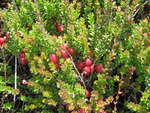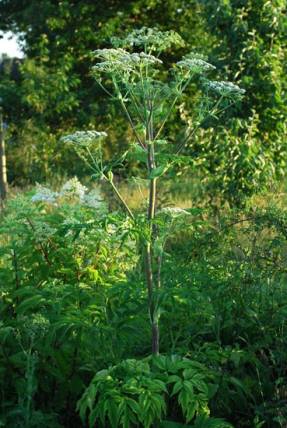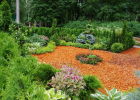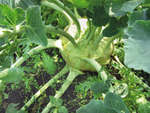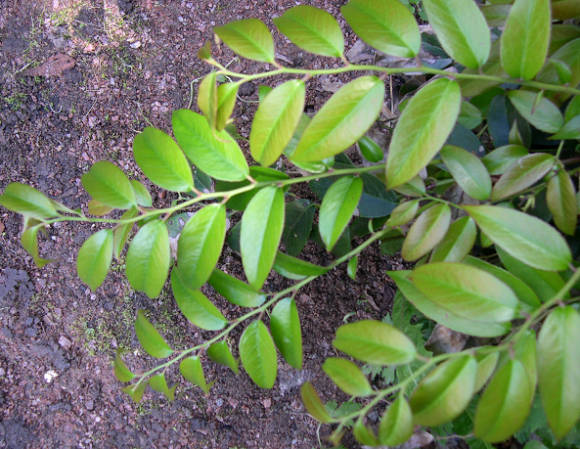
Berlin Botanical Garden has almost five centuries of history. During his long life, he moved from place to place twice. For the first time, the botanical garden was mentioned in 1573 and at that time it performed a purely utilitarian role - the cultivation of fruit and vegetable plants. In its place is now the city park Lustgarten. In 1679 it changed its location, but remained a court source of fruits and vegetables, and a few rare plants. Its scientific development begins in 1809, when the botanist Carl Ludwig Willdenow achieved the transfer of the garden to the University of Berlin. Since 1888, with the laying of the arboretum, the garden has been transferred to a new, modern place in the town of Dahlem, and another city park remains in the old place. Currently, the botanical garden is a structural division of the Free University of Berlin.
It is simply impossible to tell about this botanical oasis in one small article. Its area is about 43 hectares, and the collection includes 22 thousand species and is currently the largest in Germany. Therefore, in this article we will pay attention to the greenhouses and the botanical museum.

The first greenhouses were built at the beginning of the 20th century (for example, a large tropical greenhouse was built from 1905 to 1907). And then the complex gradually grew, was completed, and now it is a multi-level structure, which is very difficult to photograph in its entirety.
Funding for the maintenance of this expensive facility is provided not only by the state. There are guided tours, a visit to the garden costs about 5 euros. Many plants have "chefs" who pay for their maintenance, next to the plant there is a sign where the name of the "benefactor" is mentioned. This happiness costs from 250 to 1500 euros, depending on the rarity, capriciousness and size of the ward.

Greenhouses have letter numbering and a name that reflects the species composition of plants growing in them. Naturally, the numbering begins with a large tropical greenhouse. Further there are sections of begonias, tropical cultivated plants, where I stayed for quite a long time, orchids and aroids, plants of the humid tropics, tropical and subtropical ferns, bromeliads, succulents of Africa, cacti and other succulents of America, plants of South Africa, plants of hot prairies, flora of Australia and New Zealand, camellias and azaleas, aquatic plants, Mediterranean species and plants of the Canary Islands. In 2010, the palm greenhouse was inaugurated.

Of course, there are plants that are a source of pride and admiration for the staff and the botanical community. For example, the old-timers of the garden are one of the ferns, which was brought back from the old Botanical Garden, bamboo, which reaches 25 m in height and grows by 30 cm per day. You can come for two days in a row on an excursion and look at this miracle of the plant world. The specimen is especially awe-inspiring among employees and advanced nerds. noble wollemia (Wollemia nobilis) in the Australian flora section. It was discovered as a species only in 1994, and before that it was believed that only dinosaurs admired it, and we got only fossilized prints.
What caught my attention in the greenhouses? Naturally medicinal and aromatic plants. Although everyone will find a lot of interesting things here, depending on their preferences.
In the section of African succulents, aloe blossomed and sprouted. In addition to purely exotic and quite decorative species, my attention was attracted by specimens that are grown to obtain medicinal raw materials, primarily this aloe Socotrian, which during special expeditions was harvested by the Aesculapians of Alexander the Great before his grandiose campaigns for the preparation of wound healing agents. In addition, presented and aloe, and aloe awesome with spectacular thorns on the leaves.
 |  |
The exposition of useful tropical plants is very interesting. In addition to purely domestic enthusiasm for fruiting coffee and cocoa, various types of cinnamon were presented. In addition to the main ones - ceylon cinnamon and chinese cinnamon, which are of global importance in the spice market, one could get acquainted, for example, with laurel cinnamon, which is used as a spice only in the countries of Indochina, and white cinnamon, which even belongs to another botanical genus, but is used similarly to representatives of the genus Cinnamonum.
 |  |
The same can be said about alpinias... Galgant, as it is also called, is a spice plant and is used as a cheaper substitute for ginger. Gourmets and culinary specialists put it lower, but in almost all countries of Southeast Asia, rhizomes can be found on the market. In addition, alpinia is used as a medicinal plant in traditional medicine in these countries for diseases of the gastrointestinal tract and as a general tonic. There are a lot of alpine species and most of them are used locally.
 |  |
In the same section of useful tropical plants, there is also vetiver... For fans of French perfumery, it is better known as vetiver. This cereal is widely grown to produce a viscous and highly breathable essential oil. Vetiver essential oil is obtained by steam distillation of roots for a day or more, and the roots are pre-dried and stored for a rather long time. This storage significantly improves the quality of the essential oil. The aroma of vetiver is a fixative one - that is, it not only lasts a long time itself, but also retains other odors.
 |  |
Few people pay attention to a gnarled tree that looks like a tangerine with its small fruits. And yet it is - bigardia, or orange... Of course, it is not something exotic in subtropical countries, but in our country it can only grow in greenhouses. This plant is a record holder - three types of essential oil, different in aroma, pharmacological action and cost, are obtained from it: from flowers - neroli oil, from fruits - bitter orange oil, from leaves - petitgrain oil. Therefore, when you come to the pharmacy, you will immediately imagine what the listed oils are made of.
 |  |
In the orchid department, mostly blooming nepentes... Huge predatory jugs coquettishly dangled at different ends of the greenhouse, but there were almost no blooming orchids, you can see their time had not come.

Among the plants of America, its size and large label stood out soapberry... Its leaves and bark were used by the Indians of Central and South America as a detergent. The high content of saponins allowed it to be used as a substitute for soap and washing powder.
 |  |
The Botanical Museum deserves a special delight. It was opened back in 1905 and since then has been improving its expositions taking into account modern means, up to multimedia stands. Unlike the greenhouse, the structures of which were almost not damaged by the bombing, the museum building was very badly damaged and the restoration continued until the 80s of the last century. Maybe his expositions are not so interesting for a specialist, but as a teacher his stands delighted me. Here you can conduct classes for students and biology lessons for schoolchildren (which is actually being done). Everything that may be needed to convey to the younger generation the basics of botanical taxonomy, geobotany, paleobotany, plant anatomy and morphology. Themed stands on the use of plants are especially attractive: for example, coffee varieties or the cultivation of cocoa, and then in the greenhouse you can see live cocoa trees with fruits hanging right on the trunk. But this is only the tip of the iceberg. The museum has a huge library, collected over several centuries, and a herbarium.
 |  |

And this is just a very quick look at the greenhouses of the Berlin Botanical Gardens and the museum. But there is still a fabulously beautiful park, which will not have enough space to talk about in 10 articles. Moreover, everyone has their own view, and surely someone will pay attention to completely different plants, so when visiting Berlin, you should break away from contemplation of artistic values for at least one day and come to a meeting with the best artist and architect of all time - nature.
Photo by the author

